It’s been a while since I published a new sourdough recipe, and that’s because I’ve been messing around with an amazing low-gluten ancient grain called Kamut (also known as Khorasan wheat).
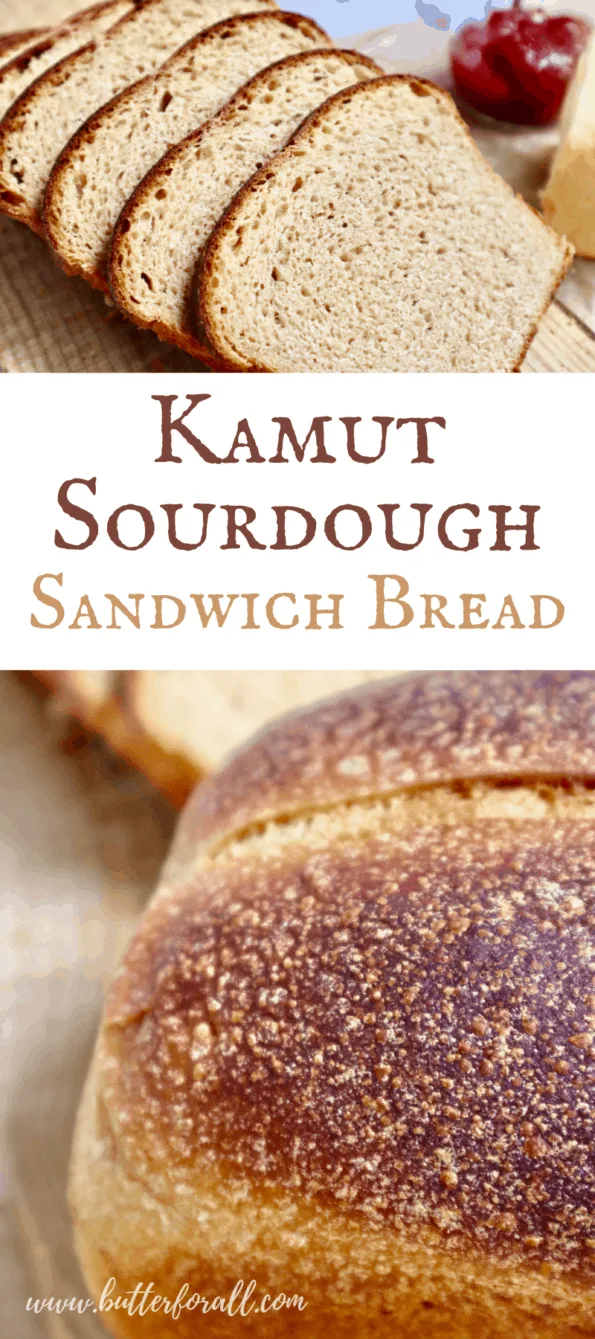
Kamut is actually a trademarked name for Khorasan wheat. The trademark ensures that wheat sold as Kamut is organically grown and free from hybridization. Khorasan is an ancient relative of durum wheat that has not been changed by selective breeding for many generations.
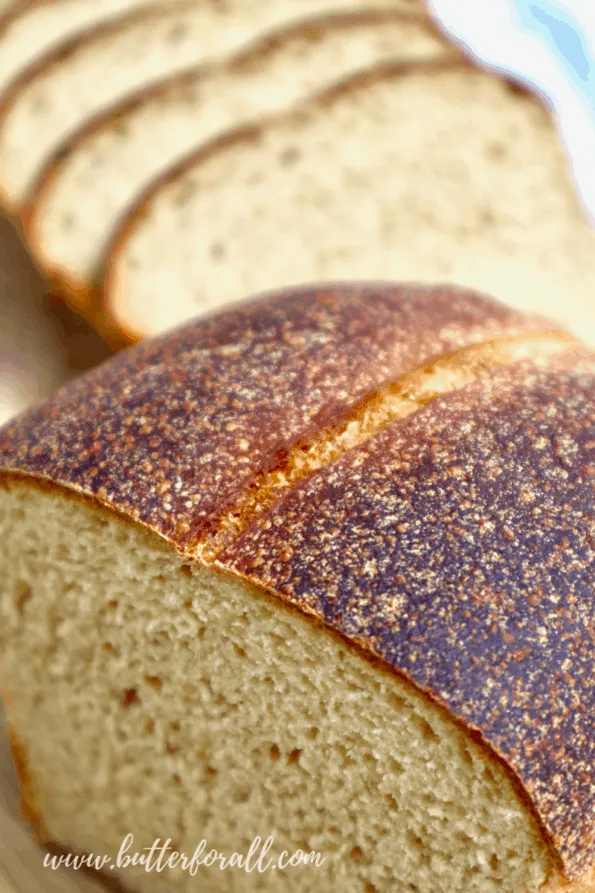
Kamut is grown primarily in Montana, where the grassland is arid enough for this drought-tolerant variety.
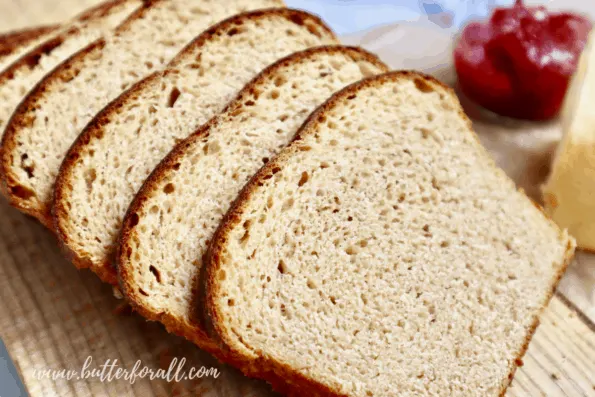
Kamut’s flavor is that of a golden-toasted grain, with hints of brown butter and a pleasingly sweet wheaty aroma. It has great elasticity and absorption despite being very low in gluten.
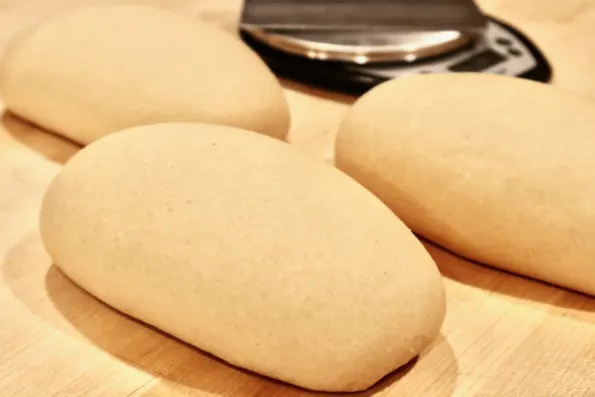
The smooth elasticity of Kamut sourdough bread dough.
While a 100% Kamut dough is not suitable for an open airy crumb, it can be added in smaller quantities (up to 25%) to boule-style bread recipes for increased flavor.

Because of Kamut’s extremely low gluten content (about 97% less than conventional wheat), it is a great choice for people with food intolerances and can be eaten by many people with gluten sensitivity (not celiacs). Sourdough fermentation further breaks down gluten, making Kamut sourdough bread an excellent and easily digestible choice.
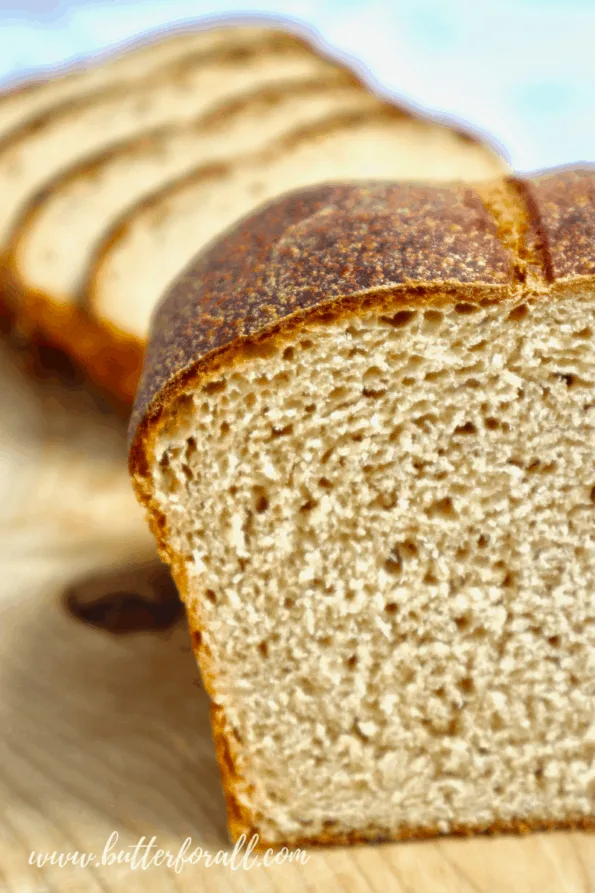
For more information about Kamut and its history please listen to episode 210 of the Wise Traditions Podcast, Wheat You Can Eat.
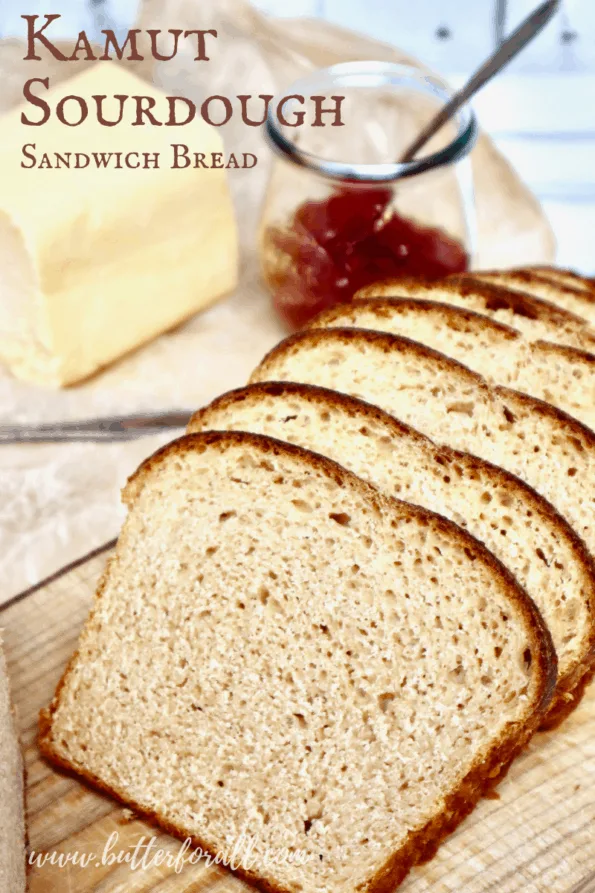
In this recipe, Kamut flour is blended with sifted whole wheat flour, milk, and a touch of honey to create a sturdy-yet-soft sandwich bread perfect for any occasion.
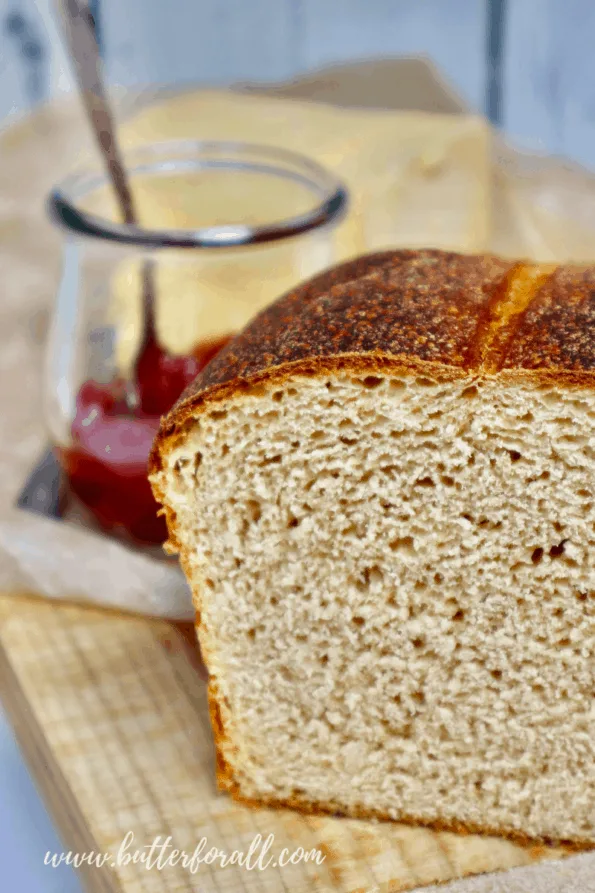
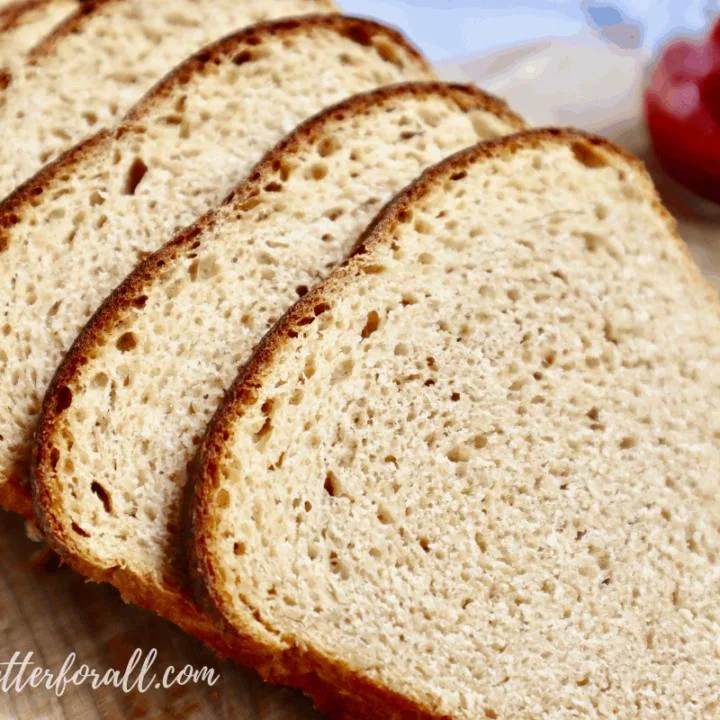
Kamut Sourdough Sandwich Bread
A generous percentage of low-gluten Kamut flour gives this sourdough sandwich loaf a distinctive golden-brown-and-buttery flavor. The addition of milk and honey keeps the bread soft and even, perfect for slicing for sandwiches, toast, or French toast!
Ingredients
- 245 grams (1 cup) whole milk
- 60 grams (3 tablespoons) raw honey
- 125 grams (1/2 cup) active sourdough starter
- 28 grams (2 tablespoons) melted butter
- 270 grams (2 cups) Kamut flour
- 135 grams (1 cup) sifted whole wheat flour
- 12 grams (1 1/2 teaspoons) salt
Instructions
The Night Before
- In a large bowl or stand mixer with dough hook attachment, mix the milk, honey, starter, and melted butter until well combined.
- Add the Kamut flour, whole wheat flour, and salt. Stir until a smooth dough forms. If the dough is too dry to come together, add water 1 tablespoon at a time until the flour looks fully hydrated and the dough becomes soft and smooth.
- Rest the dough for 5 minutes.
- Turn the dough out onto your work surface and knead the dough by hand until it's elastic. Kamut bread dough, when properly hydrated, is extremely easy to handle and doesn't need any additional flour on the work surface.
- Rest the dough for 5 minutes.
- Gently knead the dough again several times, being extra careful not to rip the outer skin. Gather the dough into a tight ball and place it seam side down in the mixing bowl.
- Cover the bowl with plastic wrap or tight-fitting lid and let the dough bulk ferment at room temperature (65 to 70℉) overnight.
The Next Morning
- Grease an 8 to 11-inch loaf pan with a little melted or soft butter.
- Turn the risen dough out onto your work surface and gently knead it to remove any gas. Again, do this carefully to not rip the outer skin of the dough.
- Gather the dough into a ball and let it rest seam side down on the work surface for 5 minutes.
- Turn the dough over so the smooth outer skin is against the work surface and pat the dough into a small rectangle. Fold the top third of the rectangle over the center of the dough and use your fingertips to press it into the center to secure it.
- Roll the doubled portion of the dough over the last third, so the seam ends up on the bottom. Pinch the open ends and tuck them under slightly.
- Rest the dough seam side down on the work surface for 5 minutes.
- Transfer the rested dough to the buttered loaf pan and cover with plastic wrap or a fully dampened flour sack towel.
- Let the dough double at room temperature.
- Preheat your oven to 400℉.
- Uncover your bread and score the top down the middle.
- Spray the top of the loaf with water if desired.
- Bake in a preheated oven for 30 minutes.
- Remove the bread from the oven and let it rest for 5 minutes in the pan before transferring to a cooling rack to cool completely.
Notes
Substitutions for Sifted Whole Wheat
In this recipe I call for sifted whole wheat, which is my personal preference. If you are looking for a great sifted whole wheat product or want to know more about it check out my favorite mill.
Regular organic whole wheat, organic all-purpose, or organic bread flour can be substituted.
Loaf Pan Sizing
There are all sizes of loaf pans available. They typically range from 8 to 11 inches in length. The shorter the pan the taller this loaf will be. But the size of pan, if between those ranges, shouldn't affect baking times.
Recommended Products
As an Amazon Associate and member of other affiliate programs, I earn from qualifying purchases.
-
 Organic KAMUT Khorasan Wheat Flour, 10 Pounds - Stone Ground Powder, 100% Whole Grain Meal, Non-GMO, Kosher, Bulk
Organic KAMUT Khorasan Wheat Flour, 10 Pounds - Stone Ground Powder, 100% Whole Grain Meal, Non-GMO, Kosher, Bulk -
 Le Creuset Stoneware Heritage Loaf Pan, 9" x 5" x 3"
Le Creuset Stoneware Heritage Loaf Pan, 9" x 5" x 3" -
 Cultures for Health San Francisco Sourdough Style Starter Culture
Cultures for Health San Francisco Sourdough Style Starter Culture -
 Camp Chef Home Seasoned Cast Iron Bread Pan
Camp Chef Home Seasoned Cast Iron Bread Pan -
 Danish Dough Whisk and Bread Lame Set Double Eye
Danish Dough Whisk and Bread Lame Set Double Eye -
 Stoneware Loaf Baking Dish
Stoneware Loaf Baking Dish -
 8-Quart Commercial Countertop Mixer, 10-Speed
8-Quart Commercial Countertop Mixer, 10-Speed -
 Pyrex 8-piece 100 Years Glass Mixing Bowl Set (Limited Edition)
Pyrex 8-piece 100 Years Glass Mixing Bowl Set (Limited Edition)
Want To Learn Everything About Sourdough?
Start with this free guide:
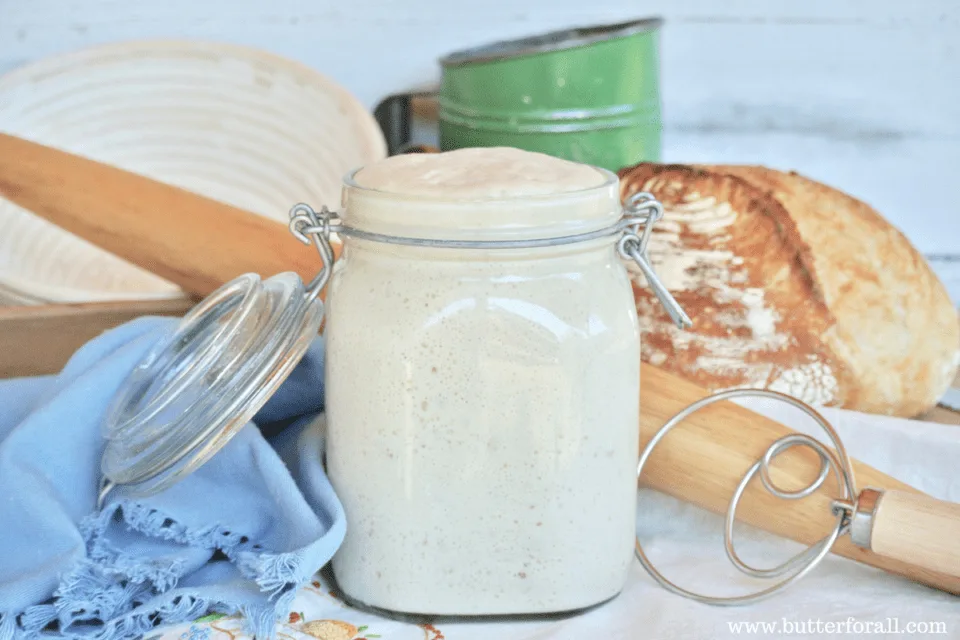
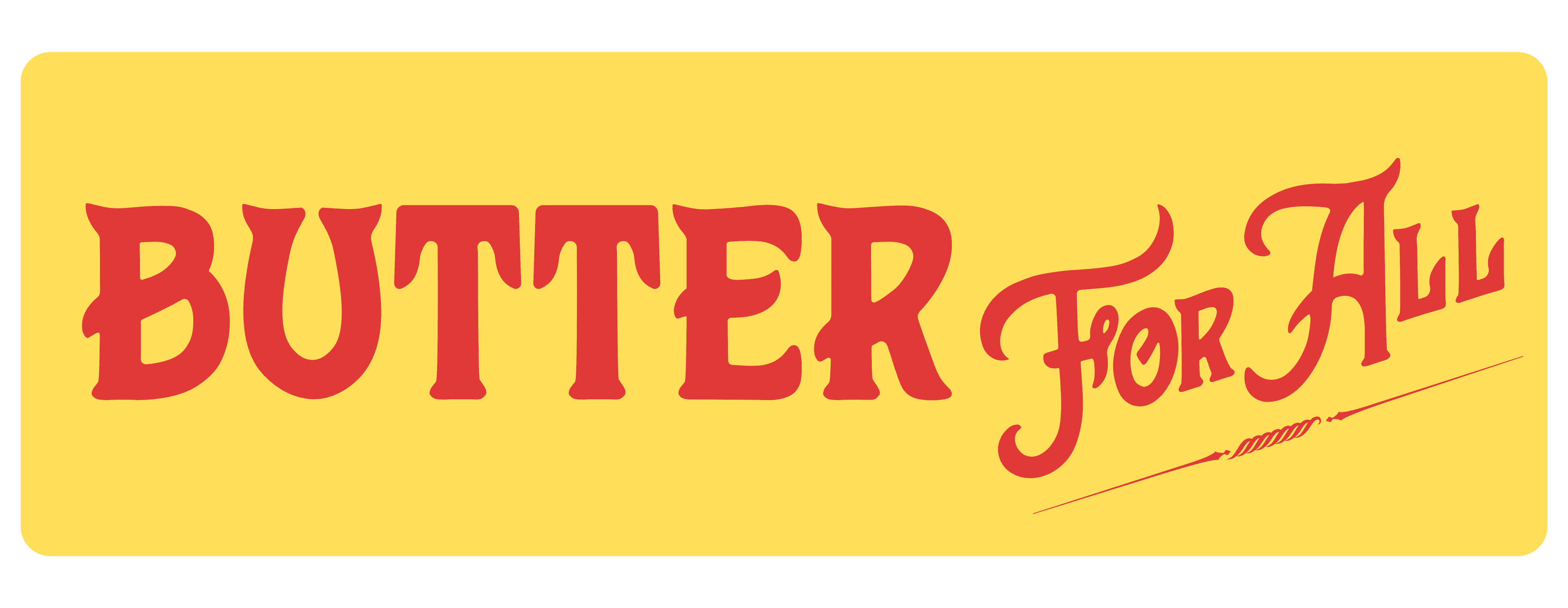
Cynthia
Wednesday 25th of June 2025
I'm an expat living in Cenral America. In my area grocery stores, there is only plain AP flour or whole wheat. A week ago, I bit the bullet and purcased a 25 kg bag (55 lbs) of artisan flour from a restaurant supply store. I made your recipe with it and it's my best sourdough loaves yet! I only made my starter April 21st using AP flour. Thanks for sharing a terrific recipe, that allows this substitution and makes great bread! I would post a photo if I could.
Butter For All
Wednesday 25th of June 2025
Hi Cynthia! What a nice note! I love that you're having success with this recipe and I'm pleased that the flour you bought worked so well. I do love seeing photos, so if you ever feel like sending one, they can be sent to my email at Courtney@butterforall.com
Have a wonderful day and thank you so much for leaving thoughtful feedback here on my blog :-)
Alyssa
Friday 26th of July 2024
Just want to say that I LOVE this recipe! I've tried a few different sourdough sandwich bread recipes and this is the best. Not only was it soft and delicious both times I've made it but it was so easy and actually turned out perfect. Thank you for such a great recipe, Courtney!
Butter For All
Saturday 27th of July 2024
Hey Alyssa!
I'm so pleased that you are loving this recipe! Thanks so much for taking the time to let me know :) It means a lot!
Tessa
Saturday 30th of September 2023
I'm wondering if adding some amount of vital wheat gluten would have any benefit in terms of getting a better rise. Your bread looks great and I love the flavor that kamut adds, but it can be a little tricky.
Butter For All
Thursday 12th of October 2023
Hi Tessa!
Absolutely! Adding vital wheat gluten will help with the strength of the dough. You'll have to let me know how that works out!
:D
Tuesday 22nd of August 2023
Can I use sifted red fife flour in place of Sifted whole wheat flour?
Butter For All
Friday 25th of August 2023
Sure! Pretty much all wheat in interchangeable as long as you adjust hydration as needed. That discernment comes from practice and intuition so just add water or flor as needed until the dough is easy to handle.
Mark
Tuesday 14th of March 2023
Hi
My loaf just didn't seem to rise that much, either in the first or second rising. Any thoughts on what I could be doing wrong? I'm using Wholewheat flour and Kamut.my SD starter smells a bit fruity though.
Butter For All
Monday 27th of March 2023
Hi Mark,
I'll try to help. It's really hard for me to diagnose what might be the problem without a lot more information though. How long does it take your starter to rise after feeding? How old is the starter? What temperature did you bulk ferment at, and for how long? Did you use active starter that was fed and bubbly? Let's start there.